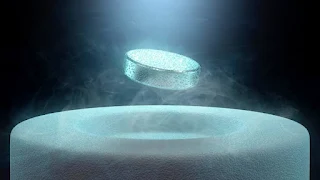Breakthrough in Superconductivity Research: Electron Pairing at Unexpected Temperatures
 |
| New Discovery in Superconductors: A Step Closer to Room-Temperature Superconductivity with Electron Pairing in Unusual Materials Image credit: Built In |
Scientists have recently uncovered a surprising phenomenon that could bring us closer to achieving room-temperature superconductivity, a long-sought goal in physics. The research, published on August 15 in the journal Science, reveals that electron pairs are forming in a material known for its insulating properties at temperatures as high as minus 190 degrees Fahrenheit (minus 123 degrees Celsius). This discovery is critical because electron pairing is essential for superconductivity, the state where electricity flows with near-zero resistance.
The Mystery of Cooper Pairs and Superfluidity
Superconductivity arises from interactions between electrons and the atomic structure of a material. As electrons move, they create ripples that attract atomic nuclei and slightly shift their charges. This shift causes another electron to be drawn toward the first, forming what is known as a "Cooper pair." Despite their mutual repulsion, these electron pairs behave differently than individual electrons, following quantum mechanical rules that allow them to occupy the same space simultaneously, creating a superfluid that conducts electricity without energy loss.
Unusual Behavior in Cuprate Materials
The study focused on a lesser-known cuprate material called neodymium cerium copper oxide, which typically exhibits superconductivity at extremely low temperatures (minus 414.67 F, or minus 248 C). When researchers exposed this material to ultraviolet light, they noticed something peculiar. Unlike unpaired electrons that lose significant energy when hit by photons, electrons in Cooper pairs resisted this photonic ejection, resulting in minimal energy loss. This resistance persisted even at higher temperatures, up to 150 K, which is unexpected given the material's low superconducting temperature.
While the cuprate in question is unlikely to achieve room-temperature superconductivity, the findings offer valuable insights. The persistence of the energy gap and the strength of electron pairing in this material suggest new avenues for research. Scientists are now exploring ways to manipulate these materials to synchronize the incoherent electron pairs, potentially paving the way for the development of superconductors that operate at much higher temperatures.
Historical Context: From Near-Absolute Zero to the Quest for Room-Temperature Superconductors
The concept of superconductivity was first discovered in 1911 by Dutch physicist Heike Kamerlingh Onnes, who observed that certain materials transitioned into a state of zero electrical resistance at temperatures near absolute zero (minus 459.67 F, or minus 273.15 C). In 1986, the discovery of copper-based materials, known as cuprates, that could superconduct at minus 211 F (minus 135 C) sparked hopes for room-temperature superconductors. However, progress stalled, and recent claims of room-temperature superconductors have been marred by controversy and accusations of data falsification.
Future Directions in Superconductivity Research
The researchers behind this new discovery, led by Zhi-Xun Shen, a professor of physics at Stanford, plan to delve deeper into the electron pairing phenomenon observed in the cuprate material. By using similar experimental approaches, they hope to gain further insights into this incoherent pairing state and explore new methods to manipulate these materials. This research could ultimately lead to the engineering of superconductors that can function at higher temperatures, bringing us one step closer to the elusive goal of room-temperature superconductivity.




.jpg)




0 Comments